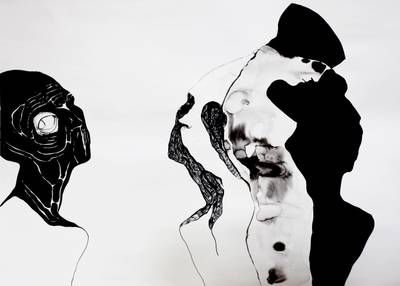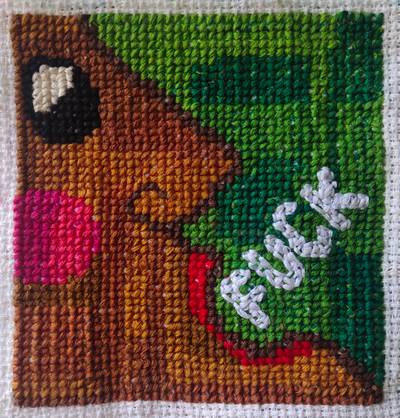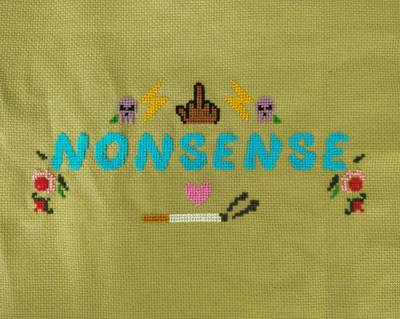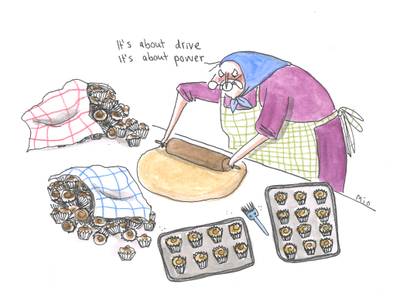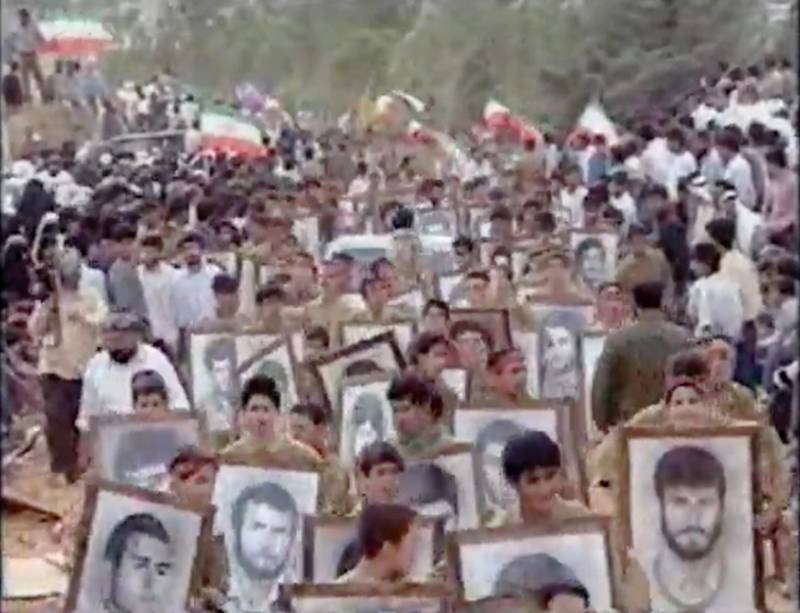

Film still from Alaa Mansour’s Aïnata, 2018
Elham Rahmati (b. 1989, Tehran) is a visual artist and curator based in Helsinki. She is the co-founder and co-editor of NO NIIN. In 2019 and 2020, she worked as the curator and producer of the Academy of Moving People & Images (AMPI), a film school in Helsinki for mobile people.
Vidha Saumya (b. 1984, Patna) is a Helsinki-based artist-poet. She is the co-founder and co-editor of NO NIIN – an online monthly magazine in Finland, and a founding member of the Museum of Impossible Forms – an award-winning cultural para-institution in Kontula, Finland.
Danai Anagnostou is a producer for film and artist moving images, and a doctoral researcher at Aalto University. In 2019, she co-founded Kenno Filmi, a production company in Helsinki that hosts projects by international filmmakers, researchers, and artists.
NO NIIN’s 32nd issue, Film as Memory, Film as Resistance, is a collaboration between NO NIIN and Kenno Filmi, a production house in Helsinki, proposing reconfigurations of film and media art production practices through creative exchanges. Editors Elham Rahmati, Vidha Saumya, and Danai Anagnostou have each commissioned two contributions, all engaging with the expansive themes of memory, resistance, and the transformative potential of cinema.
Elham:
The capacity of film to encapsulate memory extends beyond simply preserving events; it shapes how societies understand and relate to their histories. Similarly, cinema as a tool for contesting oppression cannot be reduced to neatly packaged or easily digestible articulations of dissent. In recent years, much of Iran’s acclaimed independent cinema has tended toward exactly that, simplifying resistance for easier consumption of the Western audience and being very well rewarded for it by institutions complicit in amplifying state-sanctioned neo-colonial imperialist narratives. Many Iranian filmmakers carry the banner of fighting for equality and freedom, yet rarely use their position to advocate beyond their own immediate communities. A stark example of this attitude is the misrepresentation or near absence of Hazara communities in Iranian cinema, a people that faces violence and discrimination both from the state and from segments of Iranian society, many of whom take pride in imagining themselves as dissenters of the very state they find themselves in consensus with when it comes to oppressing people they deem as inferior.
In Tracing Hazaras in Iranian Cinema: Historical Perspectives and Reflections by Mustafa Karimi, he examines the migration and representation of Afghanistan’s Hazara community in Iran, following a century of displacement, marginalization, and historical trauma. Karimi explores how Iranian cinema, from the 1970s to the present, has reflected and reinforced stereotypes of Hazaras, portraying them in low-status jobs, as morally suspect, or as outsiders expected to return to their homeland. Situating these cinematic depictions within broader histories of violence, persecution, and exile, the essay reveals the intergenerational impacts of collective trauma and the persistent social and political challenges facing Hazaras in both Afghanistan and Iran. His essay underscores the urgent need for Iranian artists and filmmakers to confront and reevaluate their own complicity in these narratives.
Moving on to my next commission: I encountered Alaa Mansour’s film Aïnata at a time when dominant Western narratives have done everything possible to neutralize and disarm resistance in Lebanon, portraying Hezbollah as a “terrorist organization” for the grave sin of resisting Israel and the United States, settler-colonial states founded on the genocide of Indigenous peoples and sustained by perpetual warfare against them. In this context, Aïnata provides an important take. In Alaa’s own words, “Aïnata invites viewers to critically examine the perceived ‘failures’ of resistance movements, whether Palestinian or Lebanese, and their capacity or incapacity to fulfill the people’s dream of total liberation.” Importantly, Aïnata—as Alaa mentions in her note—"is not a critique of the Resistance itself, but a reflection on specific paradigms and historical-political contexts within which these movements have operated.”
In Memory and the Fractured Image, Shams Hanieh examines Aïnata to explore how the film uses visual fragmentation and abstraction to reflect memory under the weight of colonial violence. Traversing the landscapes of South Lebanon and the archives of collective trauma, Hanieh highlights how Alaa Mansour’s experimental approach transforms personal and political histories into a fractured, nonlinear meditation on memory, loss, and resilience. Aïnata exists within broader artistic practices in Lebanon and Palestine, considering how distortion, glitch, and interpolation become necessary tools to represent histories that state-sanctioned archives refuse to capture.
Vidha:
Solidarity movements that resonate across borders are rare, and they are even rarer when they are filmed like how they felt—like triumphs—as they sure didn’t look like ones. While interviews and reviews are standard devices to understand and appreciate Cinema, in the case of the KENNO X NO NIIN Cinema Issue of the magazine, I commissioned an interview and a review with the ambition to deviate from their standard formats to illuminate the unique processes of documenting solidarity movements and the realities of Bahujan spectatorship.
The interview, conducted by Ananya Parikh, is with documentary filmmaker Nishtha Jain about her film Inquilab di Kheti (Farming the Revolution, 2024). Both the filmmaker and the subject matter – 2020-2021 Indian farmers protest are highly distinguished, and the interview offers an intimate insight into the challenges, ethical considerations, and artistic choices involved in documenting a defining contemporary socio-political movement in India. ‘Farming the Revolution’ is not just an apt metaphor here. It stands for the process itself—both the process of the revolution and the process of filming it. The interview confronts the persistent tension between the desire for ‘observed truth’ and the impossibility of complete objectivity, championing a cinema that embraces human complexity, ‘greys,’ and ‘unwieldy reality’ over easily marketable heroism or narrative perfection.
The review by Swati Kamble of Jyoti Nisha’s feature-length documentary, Dr. B. R. Ambedkar: Now and Then (2023), was commissioned with the ambition to promote and contextualize the film as a vital political and cultural intervention against caste-based exclusion. The existence of this documentary is a testimony to its apparent impossibility—folding into cinematic reality a vast and abstract subject matter. The review doesn’t intend to pass a verdict but unpacks the self-reflexive process of creating the possibility of this rare and unique documentary coming into being—the ‘generative refusal’ of it.
Danai:
The challenges of working in independent film today, within an ever-shifting and often hostile and violent socioeconomic and political landscape, have prompted me to reflect on the movements of filmmakers from the past. For a few years now, I have been researching the histories of women’s collaborative and collective films, making connections with contemporary artists’ moving image and independent film practices. The remembrance and reactivation of past feminist film collaborations can offer frameworks and tools to new generations of filmmakers seeking to work independently and collectively. Intergenerational and transnational bridging of collaborative and collaborative film histories suggest connecting past and present feminist filmmaking practices to create meaningful conversations across time and borders. Doing so enriches discourse and contributes to the ongoing evolution of collaborative production cultures.
Contrary to common assumptions, filmmaking has long been characterized by diversity, both in purpose and in practice. In an effort to highlight both historical and contemporary filmmaking practices grounded in polyvocality and feminism, I commissioned two contributions for this issue:
Lorena Cervera’s essay Women’s Uprising and the Latin American Film Collectives of the 1970s and 1980s introduces us to local women’s film groups, their filmographies, and intentions. Her essay contributes to scholarly and activist efforts to recover and preserve women’s cinema globally. Despite their historical significance, feminist film collectives and their work have remained largely invisible in the canon. Much of their filmography documentation is uncatalogued, unpublished, scattered, or stored privately.
Having conducted extensive research in Latin American documentary, women’s cinema, political cinema, and collective filmmaking, Cervera introduces us to feminist filmmakers based in Latin American countries, who challenged screen representations and production cultures, documented activism, and engaged in political debates. She presents several Latin American feminist film collectives active between the 1970s and 1990s, including the Mexican Cine Mujer (1975–1986), the Colombian Cine Mujer (1978–1999), the Venezuelan Grupo Feminista Miércoles (1979–1988), the Brazilian Lilith Video (1983–1987), the Argentinian Cine Testimonio Mujer (1983–1993), the Uruguayan Girasolas (1987–1993), and the Peruvian Warmi Cine y Video (1989–1998). Cervera’s contribution highlights the importance of remembering these initiatives that created spaces for feminist expression and political solidarities through cinema.
The second text I commissioned for this issue, Making Friends Across Time, is a correspondence between artist Margarita Athanasiou and curator Lorena Juan that unfolds through an edited series of letters they exchanged over the past summer. In Voices (2024), Margarita Athanasiou intertwines history, ritual, and media to create a multi-channel video essay that feels intimate and defiant. The early scenes of the work describe channeling practices shared between the artist’s mother and her as a child. Later scenes reveal how through such practices voices (spiritual, borrowed, or mediated) granted authority and permission to bodies that were otherwise mostly excluded from public debates.
The exchange between Athanasiou and Juan begins with reflections on Voices. They discuss channeling, possession, and belief as feminist technologies of relation and emancipation. Across their dialogue, they explore how voice can be both medium and message, both borrowed and owned. Through a feminist lens, they reflect how speaking “through” another becomes a practice of resistance, as well as an opening toward histories and futures that refuse singular authorship. Through their letters, they construct a polyphony across time where artists, ghosts, aliens, machines, and memories speak all at once.
